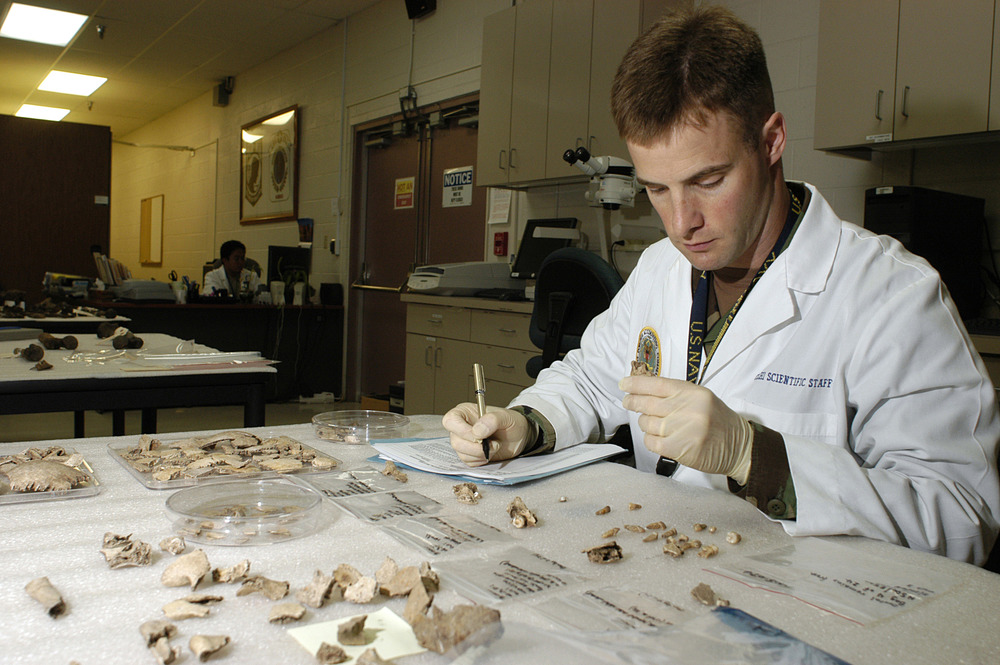Forensics 101: Forensic Dentistry
/ Following last week’s post about determining a victim’s age at the time of death using their teeth, it seemed appropriate to take a brief look at the field of forensic dentistry (also called forensic odontology). Here on Skeleton Keys, we tend to focus more on forensic anthropology as that is the science of Dr. Matt Lowell of the Abbott and Lowell Forensic Mysteries, but forensic dentistry is an important field that is often used in conjunction with forensic anthropology.
Following last week’s post about determining a victim’s age at the time of death using their teeth, it seemed appropriate to take a brief look at the field of forensic dentistry (also called forensic odontology). Here on Skeleton Keys, we tend to focus more on forensic anthropology as that is the science of Dr. Matt Lowell of the Abbott and Lowell Forensic Mysteries, but forensic dentistry is an important field that is often used in conjunction with forensic anthropology.
Forensic dentistry is the application of the practice of dentistry in criminal investigations. Often, the type of remains that leave investigators requiring the services of a forensic anthropologist may also benefit from a forensic dentist, and the two scientists will often work cases side-by-side. Forensic dentists work by comparing antemortem (before death) dental records and x-rays with post-mortem (after death) remains. They are often involved in mass casualty incidents when remains are too decomposed, damaged or fragmented for more standard identification procedures like fingerprinting or DNA.
In 2010, when I attended the Bloody Words mystery conference in Toronto, I was fortunate enough to sit in on a lecture from Dr. Ross Barlow called ‘Teeth Talk: The World of Forensic Dentistry’. Dr. Barlow had been involved in the identification efforts following the 2004 Boxing Day Tsunami that devastated South Asia. Forensic dentists were called in to assist, not because of the initial nature of the remains, but because of the sheer number of bodies (130,000 in Indonesia alone), and the inability to refrigerate the corpses in the tropical heat. Decomposition became a major complicating factor, so skeletal component identification was one of the most successful methods of identification.
Victim identification is the overwhelming task of a forensic dentist, comprising approximately 95% of their cases. But forensic dentists contribute on multiple levels to criminal investigations:
- Victim age at time of death: As mentioned last week, aging a victim based on tooth eruption and development.
- Bite mark assessment: Bite marks are common in cases of aggravated assault and abuse. Forensic dentists assess and compare the marks on a victim with the bite pattern of a potential assailant. Also, while the field of veterinary forensic science (including odontology) is in its infancy, human forensic dentists are often involved in criminal prosecutions resulting from dog attacks and the prosecution of dog-fighting rings to match dog bite marks to individual dogs.
- Identification of remains: Identification is based on both common and unique gross tooth characteristics, as well as past dental work, including fixtures and fillings.
- Identification of fire-damaged remains: During extensive fire exposure, the front teeth are the first to be lost. Tooth enamel dehydrates and sloughs off the dentin. But identification can be determined in severely damaged remains by antemortem root canals and matching antemortem fillings.
- Race determination: As we discussed when covering race determination from skull attributes, the incisors of people of Asian or native descent are shovel-shaped with ridges on the rear surface of the tooth. Those of white or black descent, have blade form incisors with a flat profile.
Like forensic anthropologists, forensic dentists are often called in to view the most badly damaged or decomposed remains. Working with investigators, they can indicate or confirm identification, or assist in trauma assessment. In mass casualty disasters, such as 9/11, floods, earthquakes, tsunamis or plane crashes, they may be the only ones able to identify the dead, giving them back their names, and allowing their families much needed closure.
Photo credit: Wikimedia Commons
Its giveaway time again! Stop by Goodreads until Thursday night at 11:59pm for the chance to win a signed ARC of A FLAME IN THE WIND OF DEATH. Enter here!



 97.7%
97.7%